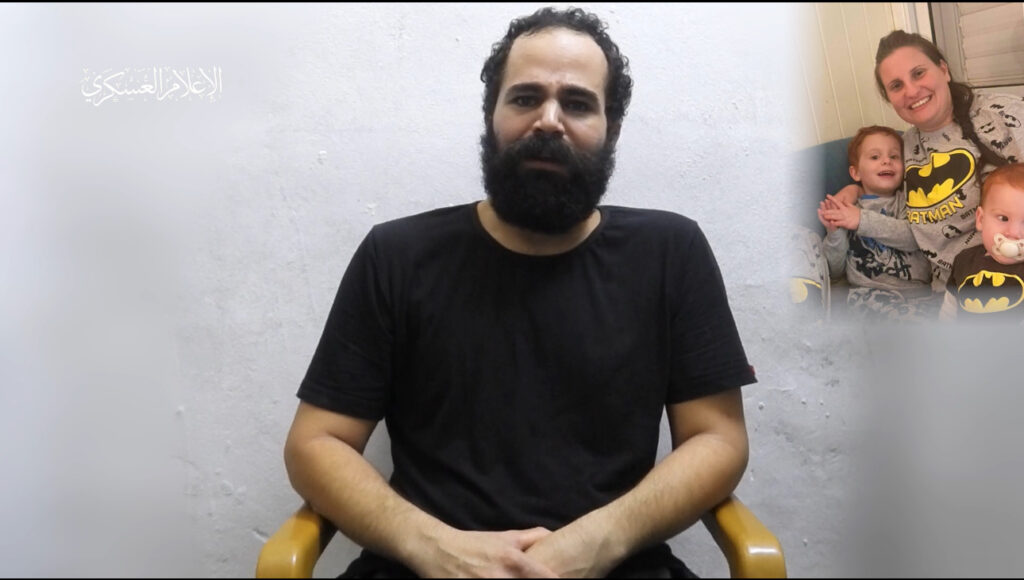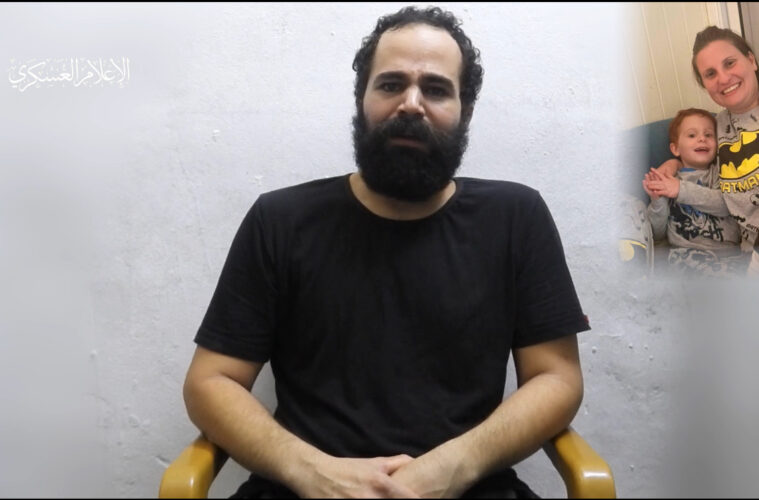Kfir Bibas Video Hamas Telegram
Terrorist organization Hamas has released a propaganda video of Kfir Bibas speaking about his family. Kfir, his wife Shiri and their sons Ariel and baby Kfir were all abducted on October 7th during the brutal terrorist attacks of Hamas on Israeli civilians. Kfir was abducted separately from the rest of his family. Initially Hamas released a statement that the Kfir family was sold to another terrorist organization in Gaza but as of yesterday they issued an unverified claim that Kfir’s wife, and two sons were killed in an Israeli air strike. The IDF has revealed that the claim has not been verified and that Hamas has proven time and time again that they have no problems lying to illicit a public reaction.
Kfir Bibas Father Video
Hamas has released a video showing Kfir Bibas speaking about Shiri Babas, son Ariel and 10-month-old baby Kfir. In a translation of the video, it appears that Kfir Bibas is addressing Netanyahu about the unverified deaths of his wife and kids. When looking at hostage videos it is very important to be critical of the fact that the release of hostage videos by terrorists poses multifaceted dangers and ethical concerns. These videos are often a tool for propaganda and manipulation, leveraging the vulnerability of hostages to propagate the agenda of the perpetrators. One of the most distressing aspects is the coercion and manipulation of victims to deliver statements or participate in propaganda under duress.
Hamas Videos on Telegram
Victims in these videos are subjected to unimaginable psychological and physical pressure. They might be threatened, tortured, or held captive for prolonged periods, leading them to say or do things against their will. Terrorist groups exploit these videos to manipulate public opinion, spread fear, and showcase their power. The content of these videos may include forced confessions, pleas for ransom, or the propagation of extremist ideologies.
Historically, several instances have highlighted the manipulation and coercion involved in hostage statements released by terrorist groups. For instance, hostages have sometimes been forced to recite scripted messages or ideologies that align with the agenda of the captors. Over time, investigations and testimonies from released hostages or rescued individuals have revealed the intense coercion they faced and how their statements were made under extreme duress.

In some cases, after hostages are freed or rescued, they have openly recanted or clarified that their statements during captivity were made under threat or coercion. These revelations debunk the authenticity or credibility of the statements made in hostage videos, exposing the deceitful tactics employed by terrorist organizations.
The dissemination of such videos also raises ethical dilemmas for media outlets and the public. While there might be an interest in understanding the plight of hostages, sharing these videos can inadvertently aid the agenda of the terrorists by amplifying their message.
In response to these challenges, ethical guidelines for media organizations have been developed to carefully consider the potential impact of airing or sharing hostage videos. Responsible reporting involves verifying the authenticity of the content, respecting the privacy and well-being of the victims, and refraining from becoming a conduit for terrorist propaganda.
Ultimately, the dangers of terrorist hostage videos extend beyond the immediate impact on the victims. They manipulate narratives, exploit vulnerable individuals, and challenge the ethical responsibilities of media and society in disseminating such content while balancing the need for awareness with the risk of amplifying terrorist agendas.
Published by HOLR Magazine.


